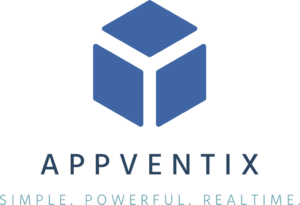As businesses increasingly move to virtual environments, the need for efficient application deployment strategies becomes more important than ever. Microsoft Azure Virtual Desktop (AVD) has a new feature called AppAttach that makes it easier to deliver applications today. However, deploying AppAttach in AVD using the provided management tooling can present challenges.
In this blog, we will explore the benefits of AppAttach in AVD, identify common challenges when using Azure Portal, and explain how AppVentiX can provide a comprehensive solution to these issues while enhancing application delivery across various environments.
The shift to cloud desktops
The adoption of AVD is reshaping the landscape of cloud desktop delivery, resulting in a significant shift towards more flexible and accessible work environments. By leveraging AVD, organizations empower their workforce with the ability to access their workspaces securely from anywhere, at any time, across various devices. This flexibility supports modern work styles that favor remote, hybrid, and on-the-go working arrangements, enhancing productivity and collaboration. AVD not only facilitates seamless access to resources but also ensure that organizations can scale their operations efficiently to meet fluctuating demands without compromising on performance or security. This modern approach to virtual desktop infrastructure helps businesses stay agile and competitive in a rapidly evolving digital workspace.
Benefits of AppAttach in Azure Virtual Desktop
AppAttach significantly enhances AVD by decoupling applications from the OS image, allowing for dynamic attachment at user logon which streamlines application management and reduces administrative overhead.
It revolutionizes application management in virtual desktop infrastructures, as it allows applications to be stored outside the virtual machine and attached dynamically. Applications behave as if they are natively installed on the host operating system without being integrated into the base image.
This offers several benefits:

This approach not only accelerates login times for a superior user experience but also optimizes performance through application isolation in containers, ensuring applications do not interfere with the host system. Additionally, AppAttach boosts scalability and efficient use of storage resources in large-scale deployments while enhancing security by maintaining isolated application environments.
Challenges of Deploying AppAttach in Azure Virtual Desktop
While AppAttach comes with many benefits when using in AVD, there are some common challenges when managing AVD with Azure Portal.
- AppAttach Only; Azure Portal can only deploy MSIX via AppAttach and not natively.
- Cloud Only; Azure Portal can only manage AVD, which can be restrictive for organizations using multiple virtual environments (e.g. on-premises or hybrid)
- Limited management; Azure Portal lacks a graphical overview of machines, showing which MSIX containers are attached, the connected users, and the containers they have access to in real-time. In addition, there is no graphical overview of all deployment and publishing events.
- Manual conversion; Azure Portal does not provide built-in conversion from native MSIX to AppAttach, instead if relies on command lines for converting to AppAttach. In addition, there is no automatic backup of MSIX packages in AVD after a conversion, which complicates the use of these packages for updates later.
- Not real-time; With Azure Portal, changes in user group assignments do not instantly reflect on user access to MSIX containers; users might need to log off and then back on to see updates.
- RAG or DAG; AVD does not support seamless mixing of published apps (RAG) and desktops (DAG); it does not allow for single publishing tasks that manage both.
- Shared containers; Azure Portal does not support MSIX Shared Containers.
- User Interface; AVD lacks an agent GUI, making it less user-friendly for package managers to test or troubleshoot MSIX applications. Examples are launching CMD or PowerShell from inside the container.
How AppVentiX Solves These Challenges
AppVentiX addresses these challenges head-on, providing a robust solution that not only enhances the capabilities of AppAttach but also facilitates a smooth transition from App-V to MSIX. Here’s how AppVentiX stands out:
- Broader Environment Support: AppVentiX extends support of MSIX to include native MSIX in addition to AppAttach, across all desktop deployments including on-premises, Citrix, VMware, Windows365, and physical machines such as laptops.
- Enhanced Management Features: AppVentiX offers graphical overviews of machine attachments and real-time publishing updates, allowing administrators to manage applications more effectively without command-line tools.
- Flexible Application Publishing: Applications can be pre-cached before user login or dynamically attached upon login, enhancing performance and user experience. AppVentiX also supports seamless integration of applications in virtual desktop brokers like Citrix and VMware.
- Automation and Real-Time Updates: With AppVentiX, application updates and rollbacks are automated and do not require user logoff, ensuring minimal disruption.
- Backup and Conversion Features: Single-click conversions to app attach and automatic backups of MSIX packages simplify updates and maintenance.
Conclusion
The rise of Azure Virtual Desktop (AVD) enhances cloud desktop delivery by offering flexible, secure access from any device, supporting remote and hybrid work arrangements. This modern infrastructure boosts productivity, scales operations effectively, and maintains performance and security in a dynamic digital environment.
AppVentiX enhances the flexibility and efficiency of application delivery across various environments, including AVD. By offering comprehensive support for both MSIX and App-V, alongside powerful management and deployment tools, AppVentiX ensures that organizations can leverage the full potential of virtual desktop infrastructure while minimizing complexity and maximizing user satisfaction. Transition to AppVentiX today to harness the benefits of advanced application delivery technologies in your virtual desktop environment.
Thank you for reading!
Check out our features page and our affordable pricing plans.

